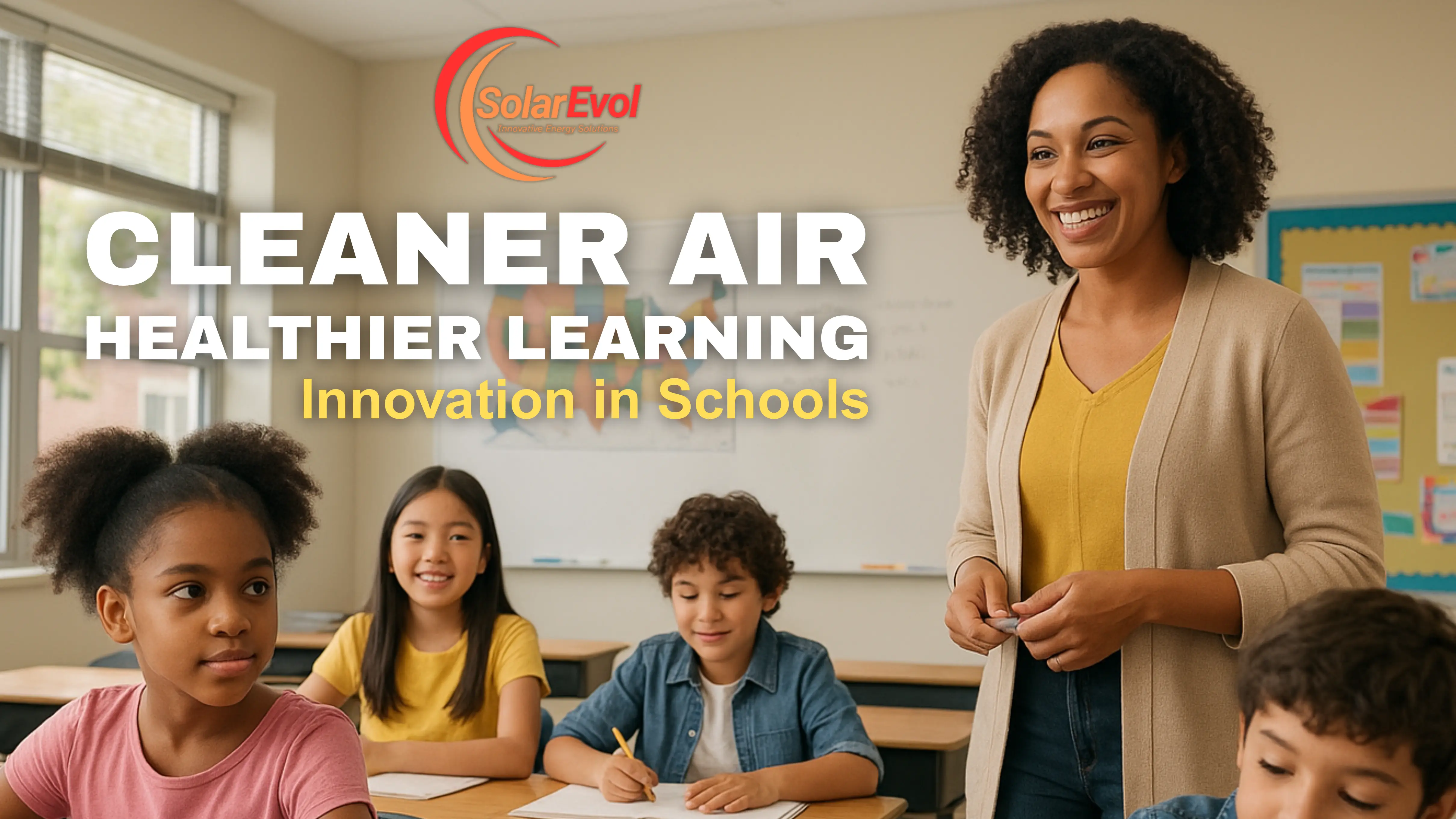
Cleaner Air, Healthier Learning: Innovation in Schools
Oct 29, 2025 In the heart of a bustling elementary school, where hallways echo with laughter, sneakers squeak across polished floors, and crayons roll off desks daily, one challenge quietly lingered year after year: the spread of seasonal flu and colds.
In the heart of a bustling elementary school, where hallways echo with laughter, sneakers squeak across polished floors, and crayons roll off desks daily, one challenge quietly lingered year after year: the spread of seasonal flu and colds.
Teachers knew the cycle all too well. One child would sneeze, another would cough, and soon, a wave of sniffles and sick notes would sweep across the classroom. Lessons were interrupted, students missed valuable days, and parents had to rearrange schedules. For educators, it wasn’t just about keeping children engaged—it was also about keeping them healthy.
This was more than an inconvenience. Lost school days often meant falling behind on lessons, extra stress on teachers to reteach material, and parents scrambling to balance work and family obligations. In a community where learning was meant to bring stability, sickness often brought disruption.
That’s where innovation stepped in.
The school decided to install The Amazing Little Bulb™ in every classroom. At first, it seemed like a small change, almost invisible compared to the bulletin boards filled with artwork, the reading corners filled with beanbags, and the interactive whiteboards that grabbed attention. But sometimes the quietest changes make the biggest difference.
This tiny device worked in the background, purifying and refreshing the air without disrupting lessons. It didn’t hum loudly or take up space on the floor. Instead, it blended seamlessly into the classroom environment.
Over the following months, teachers noticed something remarkable: fewer empty chairs. Students who once might have stayed home with fevers or sore throats were now able to join their classmates more often. The ripple effect was powerful. With fewer absences, group projects stayed on track, discussions were livelier, and classrooms felt fuller and more vibrant.
Parents began to notice too. With reduced absenteeism, children were learning more consistently. Homework routines didn’t get derailed as often. Families appreciated that the school had invested not only in their children’s education but also in their health. It sent a clear message: the school cared about students as whole people, not just as learners.
For teachers, the difference was profound. While they still managed the normal ups and downs of childhood energy, they spent less time catching students up on missed lessons and more time diving deeper into subject matter. Teaching became smoother, less interrupted by waves of illness, and more focused on growth and creativity.
It was more than a gadget—it was a reminder that technology can care for health as much as it teaches.
Rethinking the "Classroom of the Future"
When people imagine the classroom of the future, they often picture tablets at every desk, virtual reality goggles for science lessons, or AI-powered tutoring systems. And while those innovations are exciting, this experience revealed something essential: the classroom of the future is not only about what students learn with, but also the environment they learn in.
Healthy air meant students could focus longer, participate more actively, and feel comfortable. A child distracted by congestion or fatigue doesn’t absorb as much knowledge as one who feels energized and well. In this way, The Amazing Little Bulb™ supported not just health, but learning outcomes too.
A truly future-ready classroom blends academic technology with health-focused technology. It’s a space where interactive whiteboards and air-purifying bulbs work side by side—one sparking curiosity, the other safeguarding wellness. Together, they create conditions where learning thrives.
The Invisible Partner in Education
The beauty of The Amazing Little Bulb™ was that it didn’t demand attention. Students rarely thought about it, teachers didn’t have to manage it, and yet its presence reshaped the daily rhythm of school life. It became an invisible partner in education—steady, reliable, and supportive.
Sometimes innovation doesn’t need to be flashy to be powerful. In fact, its quietness was its strength. Just like a well-designed building with good lighting and comfortable seating, clean air became part of the foundation of a strong learning environment.
Lessons for the Wider Community
The success of the bulbs in this elementary school also carried lessons beyond its walls. If healthier air could improve attendance and learning in one school, imagine what could happen if entire districts or cities adopted similar health-focused innovations. Parents would miss fewer workdays caring for sick children, schools could sustain stronger performance, and communities would benefit from healthier, more engaged students.
It raises a bigger question: should health innovation be considered just as essential in schools as digital innovation? After all, what use is a cutting-edge tablet if half the class is absent due to illness?
Takeaway
Sometimes innovation in education doesn’t look like a flashy new curriculum or the latest gadget. Sometimes it looks like healthier air, stronger attendance, and a community that feels cared for. The Amazing Little Bulb™ proved that progress isn’t only about the tools students hold in their hands, but also about the invisible environment that supports them every day.
Food for Thought
- How might schools balance academic technology with health-focused technology?
- Should health innovation be considered just as important as digital innovation in classrooms?
- What would a truly “future-ready” classroom look like if it put student well-being at the center?
Stay connected with news and updates!
Join our mailing list to receive the latest news and updates from our team.
Don't worry, your information will not be shared.
We hate SPAM. We will never sell your information, for any reason.










